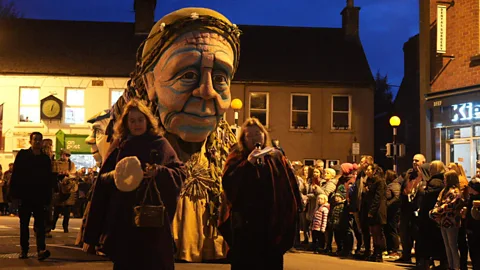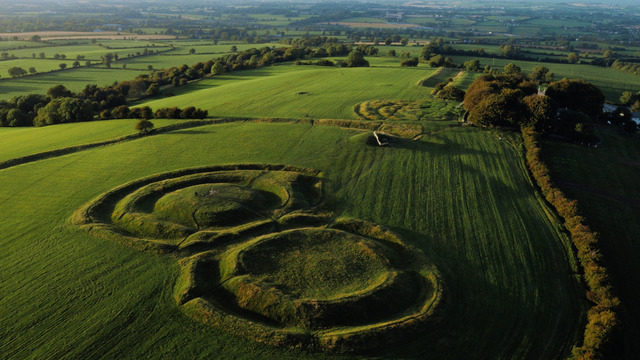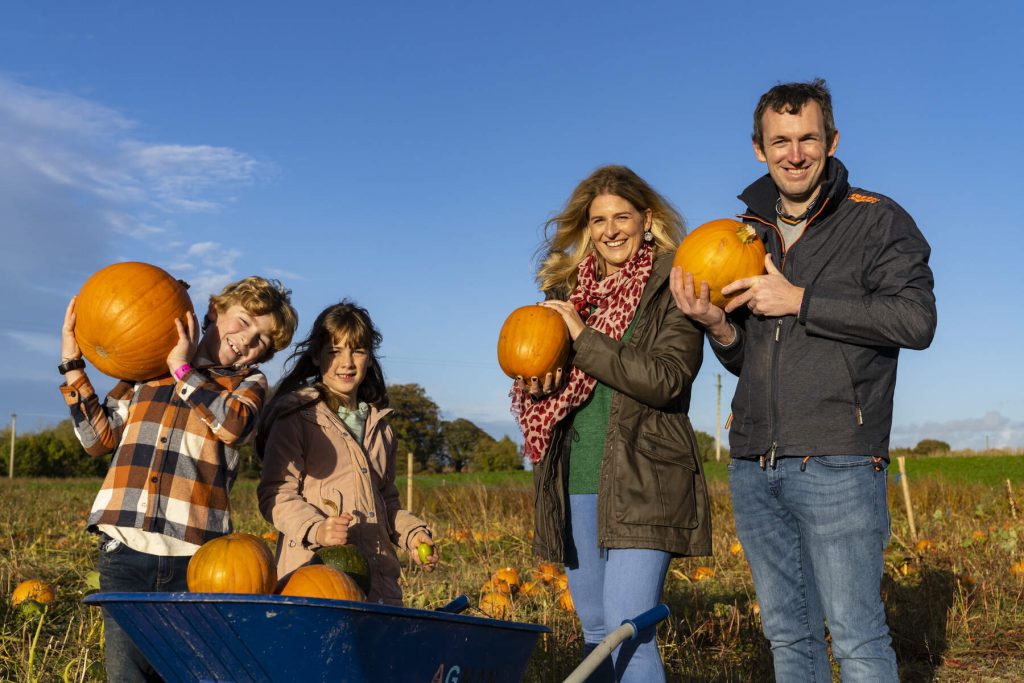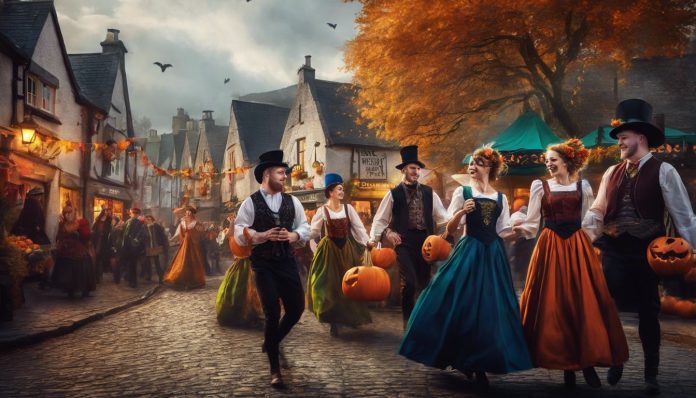Halloween: Tracing Its Celtic Roots in County Meath, Ireland.
As the leaves turn crisp and the nights grow longer, many of us prepare for Halloween, a celebration synonymous with costumes, trick-or-treating, and, in the United States alone, an estimated $12.2 billion in spending last year. Yet, this hedonistic spectacle masks the festival’s profound roots in Celtic culture, particularly in County Meath, Ireland, where the ancient celebration of Samhain—pronounced “Sow-in,” meaning “the end of summer”—originated.

In the charming town of Trim, where I found myself at the Púca Halloween Festival, the air buzzed with anticipation. The festival, running from October 31 to November 3, 2024, is a contemporary homage to the ancient traditions that once thrived here. It celebrates the duality of Halloween as a time for both revelry and remembrance. As I wandered through the preparations, I encountered Claire Morrissey, the festival organizer, holding a papier mâché sculpture of Áillen, a character from Celtic folklore known for lulling people to sleep before setting their surroundings ablaze.
Dr. Kelly Fitzgerald, head of the School of Irish, Celtic Studies, and Folklore at University College Dublin, elucidated the historical significance of Samhain. “It can be traced back thousands of years,” she explained, referring to its status as a cross-quarter day in the Celtic calendar, which occurs halfway between the autumn equinox and winter solstice. “When Irish people emigrated to North America, they took their traditions with them, and over time, they evolved into the Halloween we celebrate today.”
Samhain marked the end of the harvest season and was a time when the veil between the living and the dead was said to be thinnest, allowing spirits to wander into our world. Traditionally, fires were lit to honor these spirits, and people would don costumes to disguise themselves from any malevolent entities that might be lurking.
The Púca festival aims to celebrate these ancient traditions, with activities ranging from ghost tours and costume-making workshops to a grand parade culminating in a firework display at Trim Castle. “It’s different from Halloween in that we’re celebrating a traditional origin story,” Morrissey noted. A central feature of the festival is the emphasis on using natural materials for crafts, eschewing single-use plastics.

A key point of pride for County Meath is the Hill of Ward, near Athboy, where remnants of ancient ceremonial fires were discovered in 2014, believed to date back to around 500 CE. Morrissey elaborated, “This strongly suggests that thousands of years ago, the community would gather here on Samhain to celebrate the end of the harvest.” The act of carrying burning torches back to their homes to ignite their fires for the winter is a tradition that resonates deeply with contemporary practices.
Dr. Steve David, the head archaeologist behind the Hill of Ward excavation, emphasized its significance. “There are very few monuments in Ireland that we consider comparable to this,” he stated, highlighting that the site not only served as a ceremonial enclosure but also has panoramic views, reinforcing its importance as a gathering place.
While it’s difficult to conclusively prove that this was the first Samhain celebration, there are compelling connections. The hill’s original name, Tlachtga, is linked to a Celtic sun goddess, further tying the location to fire and light—essential themes of Samhain. Historical texts from the 17th century indicate that all other fires were extinguished to be relit from the one atop Tlachtga, solidifying its role in ancient practices.
To delve deeper into the origins of Halloween, I climbed to the summit of Tlachtga, guided by Fiona Dalton, who embodies the spirit of Tlachtga herself. Dressed in flowing earth-toned garments, she wielded a hazel staff and spoke passionately about her character from Celtic mythology, sharing how her people would gather for Samhain celebrations.
Dalton led us to Fair Green, a communal space in Athboy featuring a wood carving of Tlachtga and a circle of trees that create a fairy fort—a significant element in Irish folklore. This living history tour intertwined local mythology with the contemporary celebration of Halloween, highlighting how these stories still resonate within the community today.

As we explored the intersections of folklore and modernity, the role of food during Samhain became apparent. Regina Spector, a food historian from University College Cork, explained that Halloween is often referred to as “cally night” or “colcannon night” due to the traditional dish made of mashed potatoes and cabbage, rich in butter and warmth—a feast marking the end of the harvest.
Barmbrack, a fruit-filled loaf, is now a seasonal favorite, often baked with symbolic items that predict fortunes, such as a ring for marriage or a thimble for spinsterhood. Although modern health and safety regulations have limited the widespread practice of incorporating these items, the essence of communal sharing and the festivities remain intact
During exploration of County Meath, also embarked on a ghost tour with Cynthia Simonet, who shared local legends, including those of haunted alleyways and the Cú Sidhe—a mythical black dog believed to traverse the boundary between the living and the dead. Simonet recounted recent rumors of witches conducting ceremonies on Tlachtga, further entwining modern beliefs with the ancient practices associated with Samhain.
Visiting Neolithic sites like Newgrange and Knowth—structures predating Celtic beliefs—added another layer to my understanding of the region’s connection to the Otherworld. Newgrange, with its passage tomb, is said to serve as a gateway to the afterlife, while the standing stones at Knowth align with significant solar events, including those that mark Samhain.
Finally, my journey led me to the Hill of Tara, known as the seat of the High Kings of Ireland. The Mound of Hostages, a passage tomb here, aligns perfectly with the rising sun during Samhain, linking the ancient celebration to a rich tapestry of history that weaves through the ages.
Reflecting on my experiences in County Meath, it is clear that while historians and archaeologists may debate the exact origins of Halloween, the connections to Samhain are undeniable. The celebration serves as a reminder of the enduring human experience, connecting past and present through shared stories, rituals, and community gatherings.
As Halloween approaches and darkness envelops the nights, perhaps we can all embrace the spirit of Samhain—celebrating not just the spooky and the sweet, but also the connections that bring us together as we honor the cycles of nature and the memories of those who have come before us. The Púca festival, with its blend of tradition and modernity, encapsulates this ethos, inviting everyone to join in the celebration of life, death, and the mystical world in between.




